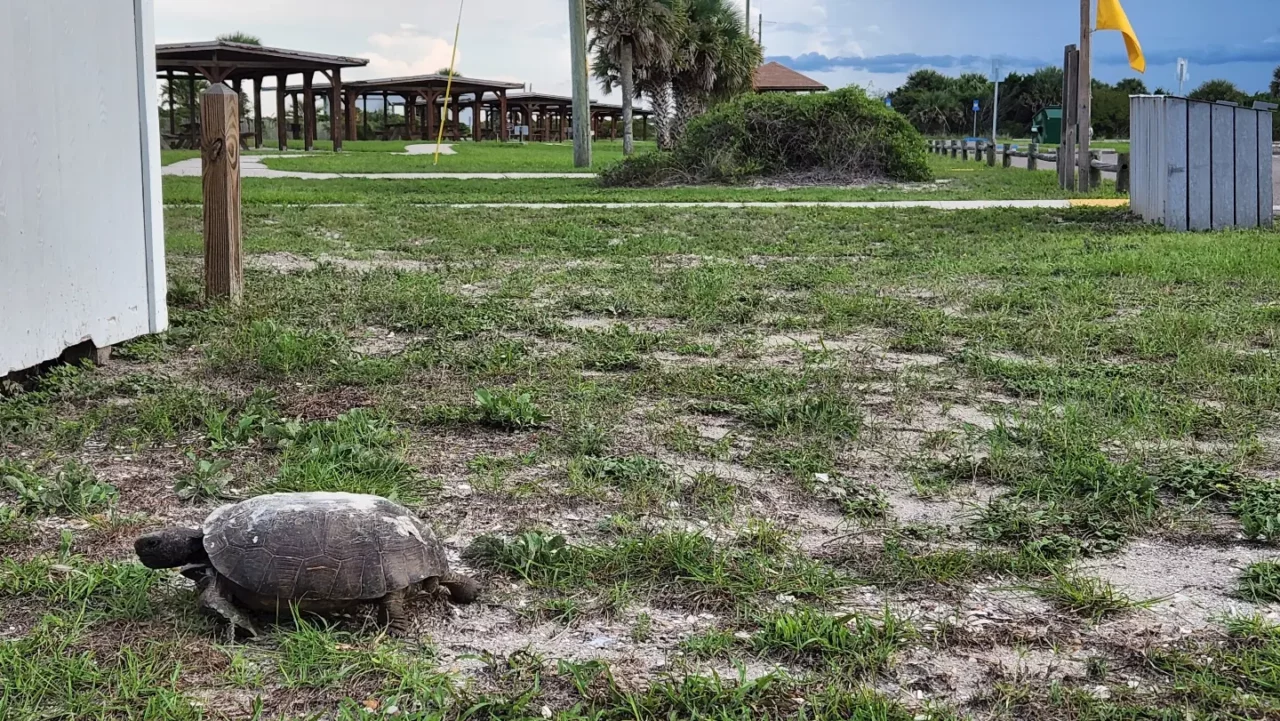
The U.S. Fish and Wildlife Service (USFWS) is dashing hopes for the gopher tortoise to land on the federal endangered species list, declaring that the species — driven from its prime habitat by ceaseless development — is actually in better shape than the tortoises’ advocates claim.
“Efforts to improve conditions for the gopher tortoise have been effective, and it is important that scientists, experts and wildlife professionals continue to strategically use our best resources to help recover the gopher tortoise where it’s most vulnerable,” said Leopoldo Miranda-Castro, USFWS Southeastern Regional Director, in a written statement.
“The Service will continue to work with our partners to support head-start programs, resource management plans and other conservation coalitions to help conserve this keystone species.”
USFWS determined the tortoises’ “distinct population segment” in Florida, Georgia, South Carolina and Alabama not only don’t meet the criteria for listing, but “are robust.” The western segment, in western Alabama, Mississippi and Louisiana, will remain under threatened status.
“Through efforts by conservation partners, we are now aware of more gopher tortoise populations beyond those known when the species was initially placed on the candidate list,” according to the USFWS.
“The 2013 gopher tortoise conservation strategy informed collaborative conservation efforts and partnerships across the gopher tortoise range. States, organizations and private landowners implemented beneficial habitat conservation efforts and used standardized survey protocols that revealed previously uncounted tortoises and produced evidence of recruitment within these populations.”
Gopher tortoises are a keystone species because their burrows provide homes to more than 360 different species. Before Florida legislators passed a state law against the practice, developers would entomb and kill tortoises in their burrows. Development and habitat loss is presently the No. 1 threat to the species’ survival.
A regular topic at Florida Fish and Wildlife Conservation Commission meetings, Florida’s public-private system of tortoise relocation has been strained for a while and will continue to be that way because developers want to build on areas that gopher tortoises prefer to live. Agency staff have expressed it’s a struggle just to keep up with the number of tortoise relocation requests.
“State programs, particularly in Florida — the heart of their range — are just not working,” said Elise Bennett, attorney for the Center for Biological Diversity, in comments to the Associated Press before the announcement. “Florida is largely just moving them out of areas under development and into smaller and smaller habitat. And fragmentation is a problem already.”
Gopher tortoises like sandy soil in which to create their burrows, which includes upland forests. But the problem is along the coasts, especially. Tortoises like the dune fields and maritime forest areas where developers like to place beachfront residences.
The agency’s “notice of findings” on gopher tortoises is set for an Oct. 12 publishing date in the Federal Register. A public information session on the decision, by way of webinar, is scheduled for Dec. 13, 7-9 p.m. Registration is available on the USFWS website.




2 comments
Mr. Haney
October 11, 2022 at 3:15 pm
Let’s face it. Gopher tortoises get in the way of developers and in Florida we can’t have that.
marylou
October 13, 2022 at 4:14 pm
Animals belong to all Floridians/Americans, not just to whatever person owns the land that an animal happens to be standing on at the moment. Feds should be protecting natural resources like tortoises and Florida Panthers for present and future residents, as well as the many other species who depend on their existence.
Comments are closed.